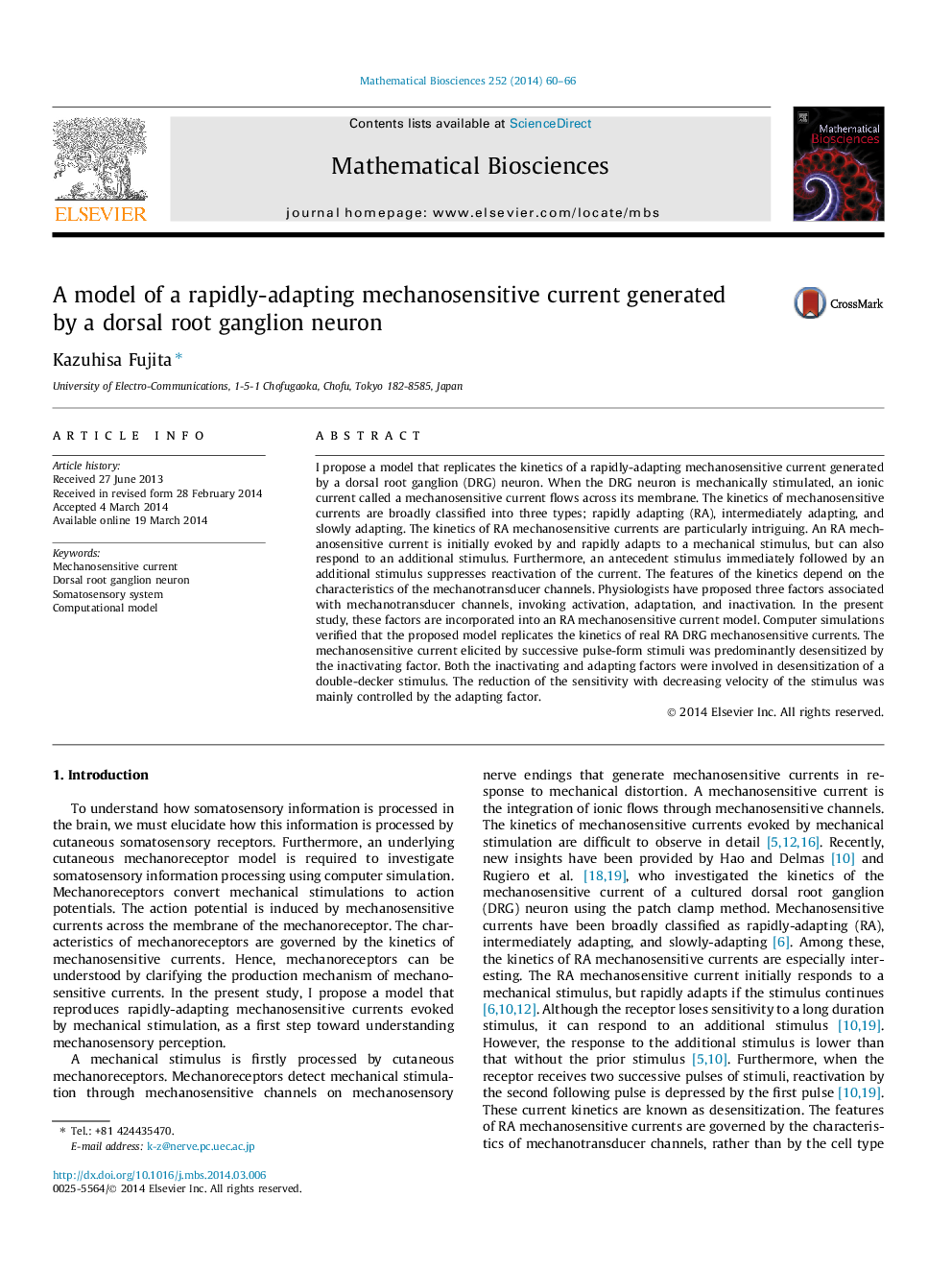| کد مقاله | کد نشریه | سال انتشار | مقاله انگلیسی | نسخه تمام متن |
|---|---|---|---|---|
| 4500040 | 1624028 | 2014 | 7 صفحه PDF | دانلود رایگان |
• A model of rapidly-adapting mechanosensitive currents of DRG neurons was developed.
• The model can replicate the kinetics of a mechanosensitive current.
• The model has activating, adapting and inactivating factors.
• The adapting and inactivating factors contributed to the production of desensitization.
I propose a model that replicates the kinetics of a rapidly-adapting mechanosensitive current generated by a dorsal root ganglion (DRG) neuron. When the DRG neuron is mechanically stimulated, an ionic current called a mechanosensitive current flows across its membrane. The kinetics of mechanosensitive currents are broadly classified into three types; rapidly adapting (RA), intermediately adapting, and slowly adapting. The kinetics of RA mechanosensitive currents are particularly intriguing. An RA mechanosensitive current is initially evoked by and rapidly adapts to a mechanical stimulus, but can also respond to an additional stimulus. Furthermore, an antecedent stimulus immediately followed by an additional stimulus suppresses reactivation of the current. The features of the kinetics depend on the characteristics of the mechanotransducer channels. Physiologists have proposed three factors associated with mechanotransducer channels, invoking activation, adaptation, and inactivation. In the present study, these factors are incorporated into an RA mechanosensitive current model. Computer simulations verified that the proposed model replicates the kinetics of real RA DRG mechanosensitive currents. The mechanosensitive current elicited by successive pulse-form stimuli was predominantly desensitized by the inactivating factor. Both the inactivating and adapting factors were involved in desensitization of a double-decker stimulus. The reduction of the sensitivity with decreasing velocity of the stimulus was mainly controlled by the adapting factor.
Journal: Mathematical Biosciences - Volume 252, June 2014, Pages 60–66
